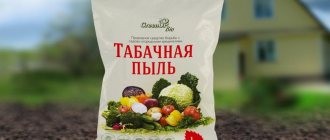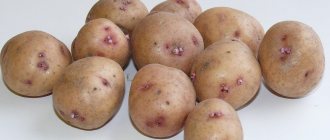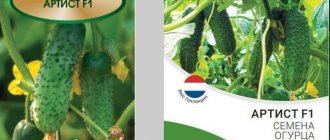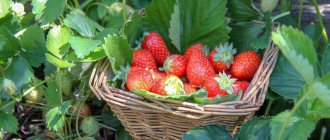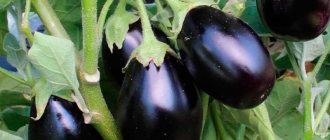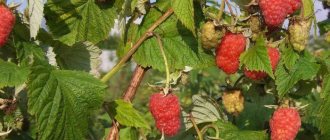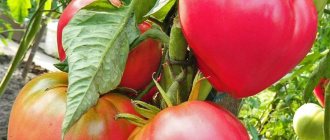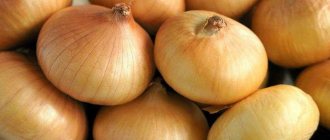General characteristics of culture
Chickpeas are nicknamed mutton peas or chickpeas due to the unusual shape of the bean, which grows in a rounded angular shape with a prominent spout. The slightly swollen seed pods of this plant range in color from light yellow to dark brown and are not susceptible to cracking when fully ripe. There are from 1 to 3 pieces in one pod.
The root system of annual chickpeas is well developed and goes deep up to one and a half meters. The uniqueness of the plant’s roots lies in the ability to form a large number of tubers, which enrich the soil with nitrogen and accelerate the dissolution of phosphates.
Chickpea stems, which are not prone to lodging, grow to a height of 25 to 60 cm and have a straight or branched structure, depending on the variety. The elliptical foliage is green in color and has a reddish tint in the initial phase of plant growth. Thanks to the well-established self-pollinating system, chickpeas do not cause any particular inconvenience when growing.
The chemical composition of chickpea seeds is as follows:
- 30% protein;
- 12% fiber;
- 8% fat.
The amount of protein from 1 ha of chickpeas exceeds even that of grain crops.
Content of nutrients in chickpeas:
- sodium;
- calcium;
- potassium;
- selenium;
- iron;
- phosphorus;
- magnesium;
- zinc;
- vitamins A, B, beta-carotene, E, PP, C.
Chickpeas are loved by many gardeners for their taste and beneficial properties. The product has proven itself as a main component in the preparation of various dishes and is often used in folk medicine.
Using chickpeas in alternative medicine
Chickpeas and their derivatives are often found in traditional medicine recipes. Chickpeas and sprouted beans are used to treat and prevent diseases of internal organs; flour is used in cosmetology. What are chickpea grains and flour? These are beans that have been ground to the desired consistency.
Sprouted beans
It's easy to sprout chickpeas. Place the beans in a thin layer in a small container and fill with water. You need a little water until the chickpeas are completely covered; as the seeds absorb moisture, you need to add it. Sprouts appear after a few days.
Sprouted beans help improve the functioning of the gastrointestinal tract
A tablespoon of sprouted seeds is crushed and poured with a glass of boiling water, filtered after half an hour, divided into four doses and drunk before meals. This infusion helps prevent the appearance of kidney stones and is a prevention of diabetes and vascular atherosclerosis. When dealing with poisoning and constipation, you should use a decoction of two tablespoons of sprouted seeds. They are boiled in 0.5 liters of water for 15 minutes. The strained infusion is taken in small doses 3-4 times a day.
General health of the body
The beneficial properties of the product largely depend on how you prepare the chickpeas. To cleanse the body and prevent diseases, it is useful to eat soaked beans. They are filled with water at a ratio of 1:2 and left overnight. You can eat either whole grains or crushed into a puree. It is recommended to take it for a week followed by a week break. To improve immunity, it is recommended to eat porridge based on chickpeas. Adding celery, almonds or radish oil to the porridge will help cure bronchitis and cough.
Cosmetology
In cosmetic masks, chickpea flour and water in which the grains were soaked are used. It is believed that such water is a remedy against inflammation of the gums; it is also used to rinse hair against hair loss.
A mask with chickpea flour will restore elasticity to the skin
Healthy color and elasticity of the skin of the face and neck will help to purchase a mask based on chickpea flour. To prepare it you will need:
- 3 tablespoons of fat sour cream;
- 3 tablespoons chickpea flour;
- 0.5 teaspoon of honey;
- 1 quail egg.
The ingredients are mixed until smooth and applied to previously cleansed skin for 20 minutes, then rinsed off with warm water.
Chickpea varieties
There are a huge number of varieties of chickpeas, because they are grown in more than 30 countries. All varieties of Turkish peas can be divided into groups according to seed size:
- small-seeded , thousand grain weight - less than 200 g;
- medium-seeded with a mass of thousands of grains from 200 to 350 g;
- large-seeded , weight of a thousand grains - more than 350 g.
There is another classification of chickpeas according to growing regions:
- Southern European group . The plant in maturity reaches 60-70 cm, having lush branching in the upper part. The flowers of chickpeas are small in size, red or pink in color.
- Central European group . Adult seedlings grow 35-45 cm into a spreading bush, blooming only in white.
- Anatolian group . In the mature growth phase, the bushes are no higher than 25 cm with a lush top and white flowers.
In the climate of our country, 4 varieties of chickpeas are considered the most common:
- Krasnokutsky 195 . The branched upright bush grows up to 30 cm, has white flowers, the distance from the ground to the lower beans is about 15 cm. From 10 sq. m. m yields 2.5-3.5 kg of yellow-pink wrinkled beans. The growing season lasts 90-110 days. Contains the highest percentage of protein in the fruit among all chickpea varieties.
- Budjak . Bush up to 60 cm high, large white flowers. The lower beans hang 20 cm from the ground. Vegetation period is 80-90 days. From 10 sq. m yields up to 2 kg of oblong beige beans.
- Jubilee . A low, erect bush up to 40 cm in height produces yellow-pink beans from 1.5 to 3 kg per 10 sq. m. The growing season is 90-110 days.
- State Farm . Dense low bushes grow up to 30 cm, the beans are angular, tapered brown. From 10 sq. m gives from 1.8 to 3.7 kg of yield. The growing season lasts 100 days. Contains the lowest amount of protein.
Subject to the correct planting and crop care conditions, all varieties of Turkish peas give good yields.
Composition and calorie content of chickpeas
Bladderwort is a healthy source of protein and carbohydrates, micro- and macroelements, and polyunsaturated fats.
| Compound | Quantity |
| squirrels | 19.5 g |
| fats | 6.5 g |
| carbohydrates | 59 g |
| alimentary fiber | 3 g |
| water | 11.4 g |
The calorie content of Turkish peas is 360 kcal per 100 grams. But high nutritional value does not mean harm, but indicates high nutritional properties. After all, to satisfy the feeling of hunger you will need a very small amount of ready-made chickpeas.
The chemical composition of lamb peas will benefit all human organs.
Minerals:
- silicon;
- iron compounds;
- boron;
- calcium and potassium;
- manganese;
- phosphorus;
- molybdenum.
Among proteins and amino acids:
- lysine;
- methionine;
- tryptophan and others.
And almost a complete group of vitamins:
- B1, B2, B4, B5, B6, B9;
- nicotinic and ascorbic acids;
- vitamins A, K and E.
A rich source of omega-3, omega-6 acids, the benefits of which have long been beyond doubt.
It is not possible to carry out any treatment with chickpeas, but the rich chemical composition of nakhat has a beneficial effect on the human body. The bladderwort is especially useful for dieters and those who do not consume meat products, because a low protein content in the diet can be harmful.
Optimal growing conditions
Lamb peas are resistant to changes in weather conditions. It is able to survive sudden frosts down to -10 degrees and tolerates high temperatures well.
The growing season lasts 80-110 days, seeds begin to germinate at 2-4 degrees. Chickpeas produce a good harvest, developing at a temperature of 20-25 degrees.
The crop is drought-resistant in all phases of growth. This is possible due to the abundant hair that covers the foliage, stems and fruits of the crop. In addition, the thick pubescence of chickpeas secretes oxalic and malic acid, which protects it from most pests.
Chickpeas are not particularly demanding of the previous plants in the garden and give good performance on fertile black soil without additional fertilizing. The nature of growing chickpeas is such that it itself is one of the best precursors for most crops, creating favorable conditions for moisture accumulation.
Lamb peas vacate the area early, and therefore, in large-scale agricultural cultivation, the “winter wheat-chickpea-winter wheat” crop rotation scheme is often used.
Useful properties and contraindications
Since ancient times, it was believed that eating chickpeas increases male strength, improves lactation, and normalizes the menstrual cycle. Lamb peas were used for medicinal purposes to rid the kidneys of stones and remove excess fluid from the body.
Currently, scientists have proven the property of chickpeas to effectively remove cholesterol. In addition, the fruits of the plant have many other useful advantages:
- easily absorbed by the body;
- is one of the best sources of protein, not inferior to meat;
- contains carbohydrates and proteins;
- in tandem with rice, it has the ability to nourish the body with amino acids;
- very nutritious, so a small amount can satisfy hunger;
- has a number of medicinal properties, can purify the blood, prevents inflammatory processes in the oral cavity, normalizes heart rate and digestive functions, alleviates back pain;
- significantly increases hemoglobin in the blood, helps eliminate excess cholesterol and normalizes sugar levels;
- used to treat eye and skin pathologies;
- has anticonvulsant properties.
All these properties are determined by the rich chemical composition of the product:
- protein resembling chicken egg white in its properties up to 30%;
- fats from 6 to 8%;
- cellulose;
- amino acids;
- minerals and vitamins such as phosphorus, manganese, calcium, thiamine, iron, magnesium, riboflavin.
However, along with a large number of useful properties, it also has a number of contraindications. For example:
- causes intestinal flatulence, so it is not recommended to eat it with cabbage;
- will provoke stomach spasms when used simultaneously with cold drinks;
- Do not eat chickpeas with pectin-containing fruits;
- chickpeas should absolutely not be used for diseases of the bladder, gout, poor circulation, thrombophlebitis, inflammatory processes in the gastrointestinal tract;
Important! The use of chickpeas may cause allergic reactions
Elderly people should use chickpeas with extreme caution due to the danger of severe gas formation
Elderly people should use chickpeas with extreme caution due to the danger of severe gas formation. Chickpeas are successfully used in dietetics due to its ability to reduce the calorie content of food consumed while maintaining its nutritional value.
But before using diets containing this nut, consultation with specialists and your doctor is necessary.
Chickpeas are successfully used in dietetics due to its ability to reduce the calorie content of food consumed while maintaining its nutritional value. But before using diets containing this nut, consultation with specialists and your doctor is necessary.
Land preparation
Soil preparation before sowing chickpeas is carried out in 2 stages:
- In the autumn after collecting the previous crop . Before the onset of frost, the area for Turkish peas is freed from perennial weeds by cultivation or treatment with glyphosate. If necessary, apply phosphorus-potassium fertilizers.
- In the spring before sowing . The soil is dug up, carefully removing young debris. It is believed that the greater the plowing depth, the higher the yield of Turkish peas.
Chickpeas do not cope well with weeds, so before sowing and during plant growth it is necessary to monitor their absence.
Preparation of planting material
Before planting Turkish peas on an industrial scale, the seeds are pre-treated with a preparation of nodule bacteria to increase the yield. In a small area, to check germination, immediately before sowing in open ground, planting material is soaked in a large container with water at room temperature.
Chickpeas tend to swell by 140% of their mass upon prolonged contact with water. Therefore, when soaking beans for planting, take a container with an amount of liquid exceeding the volume of the seeds.
After thorough mixing, the beans are left in water for 6-12 hours until they swell. Then drain the water and cover the container with a plastic bag to prevent the material from drying out. Leave the seeds in this form at home until germination, periodically checking and moistening if necessary.
When using seedlings indoors, chickpeas are not pre-soaked.
Turkish peas for cleansing the body
To help your body cleanse itself, use the following recipe. You need to take the peas, pour cold boiled water over them and leave them to soak for 8–12 hours at room temperature, preferably in a glass or ceramic container. After this, you need to grind it using a meat grinder or blender and consume it in small portions throughout the day. Chickpeas can be added to a variety of dishes, including porridge and soups, if you don't like its taste in its pure form. Treatment should be continued for a week. As a result, the body is cleansed of toxins and saturated with useful substances, and metabolism also improves, which promotes weight loss. This cleansing should be carried out for three months, taking a seven-day break after a week of using peas [2].
Best materials of the month
- Coronaviruses: SARS-CoV-2 (COVID-19)
- Antibiotics for the prevention and treatment of COVID-19: how effective are they?
- The most common "office" diseases
- Does vodka kill coronavirus?
- How to stay alive on our roads?
Planting chickpea seeds
There are two ways to plant Turkish peas: directly in open ground or first as seedlings at home. Both methods lead to a bountiful harvest if all steps are completed in a timely manner.
Planting in open ground
A week before the last expected frost, after germination of soaked seeds in warm conditions, they are laid out in pre-prepared holes on the site. With a row planting scheme, they are placed at a distance of 15 cm from each other at a depth of 6-8 cm. If the strip method is chosen, planting material is placed in the same depression at a distance of 45 cm.
To obtain uniform shoots, it is important to plant chickpeas at the same depth in well-moistened soil. If the soil is not sufficiently moistened at the time of planting, then the holes are pre-watered.
After laying out the beans, the rows are sprinkled with earth and leveled. If the forecast promises frosts, you can protect the plantings with covering material at night.
Watch the video that shows how to prepare chickpea grains for planting and plant them in open ground:
Planting seedlings
A month before the last predicted frost, chickpea seeds are planted as seedlings at home. Chickpea seedlings are not replanted to avoid damage to the abundant root system, so paper or peat pots are used for sowing seedlings, which will dissolve in the area. Place 1-2 dry seeds in biodegradable containers at a depth of 2-4 cm.
If 2 sprouts sprout, the weaker one is cut off rather than dug up, so as not to disturb the roots.
The pots are placed on the window so that the soil has enough light. Until the emergence of seedlings, which usually begins after 2 weeks, the soil is kept moist.
After all frosts have passed, when the seedlings reach 10-13 cm, they begin to transfer them to an open area. In the prepared area, pits are formed identical to the size of the cup. Chickpea seedlings are planted at a distance of 14-20 cm from each other, leaving 40 to 60 cm between rows. After laying out the pots with seedlings, their surface is slightly covered with earth.
Growing chickpeas using herbicide-free technology
In the last century, many publications called peas the “king” of the legume kingdom for their value and potential yield. Today, soybean, given its importance in production and the rate of increase in acreage, can safely be considered the “queen” of legumes. Continuing this chain, we can safely call chickpea a “prince” with great ambitions for the throne.
In the world, chickpeas rank third after soybeans and beans among leguminous crops in terms of cultivated area, occupying almost 13-14 million hectares. In India alone, almost 10 million hectares are sown with it every year, which is approximately 83% of the world's area. It is grown in Turkey, Israel, Pakistan, Iran, Armenia, Kazakhstan, Azerbaijan, as well as in Africa, South and North America and Europe.
To understand the technological intricacies of growing chickpeas, you need to have an idea of the biological characteristics of the crop. So let's start with this.
Botanical characteristics and biological features of chickpeas
Chickpeas belong to the legume family (Fabaceae Lindl.) and the genus Cicer L. There are 39 known species of the genus Cicer, which are distributed in Central and Western Asia. Only one species is grown in culture - Cicer arietinum L., which is not found in the wild.
Cultivated chickpea (Cicer arietinum L.) is an annual plant, quite cold-resistant, the minimum temperature for seed germination is 4...5 °C. In terms of drought, heat and frost resistance, it ranks first among the group of legumes. In moderate winters, chickpea crops overwinter well in the seedling phase under snow cover, withstanding a short-term drop in air temperature to -25 °C. In the spring, after the snow melts, seedlings can withstand frosts down to -16 °C; adult plants do not die at -8 °C.
The chickpea root system is taprooted, with a well-developed main root that penetrates the soil to a depth of more than 150 cm, but almost 50% of the root system develops in the arable horizon at a depth of up to 20 cm. Nodules with nitrogen-fixing bacteria form on the roots.
The stem is erect, with many branches. The plant is standard, semi-standard or extensive in shape. It begins to branch at the base of the stem or in the middle part, depending on the variety. The height of the plant varies from 20 cm to 1 m, on average 45-60 cm, the color is green, with various deviations from light to dark green, with or without the presence of anthocyanin pigmentation.
The leaf is complex, imparipinnate, consists of 11-17 leaflets, the number of which depends both on the variety and on the background location on the plant. The multileaf leaves are found in the middle part of the stem. The shape of the leaves is elliptical or obovate, length - from 9.3 to 20.7 mm, width - from 3.5 to 11.3 mm. The color of the leaves is green, bluish-green or yellow-green, sometimes with a purple tint.
The flowers are five-membered, small, the color of the corolla is most often white or purple, although there are variations of pink, light pink, dark pink, blue or yellow-green. There is a correlation between the color of flowers and seeds: as a rule, light seeds form plants with white flowers, dark ones - with pink or purple flowers. Peduncles are mostly one- or two-flowered.
The fruit is an oval-elongated bean, oval or rhombic in shape, 1.5-3.5 cm long, with a parchment layer, does not crack when ripe. Ripe beans have different shades: white seed varieties are straw-yellow, green seed varieties are green, and dark seed varieties are bluish-violet. The number of seeds in a bean is usually 1-2, rarely - 3.
Chickpea seeds are characterized by the presence of a spout, the surface is wrinkled or smooth. There are three seed shapes: angular (resembling a ram's head), round (that is, pea-shaped) and intermediate (resembling an owl's head). The color of the surface seed coat can be white, yellow, pink, gray, green, light brown, brown, black or dark brown, and sometimes you can find varieties with variegated seeds. Under humid growing conditions, the color of the seed coat is darker, and under dry growing conditions, it is lighter. The cotyledons are usually yellow with varying color intensities; it is very rare to find varieties with green cotyledons. The weight of 1000 seeds ranges from 60 to 700 g. Typically, varieties are divided into three groups according to seed size: small-seeded - up to 200 g, medium-seeded - 200-350 g, large-seeded - more than 350 g.
The growing season of chickpeas is 80-120 days, depending on the variety and growing conditions. According to the photoperiodic reaction, chickpeas are a long-day crop; therefore, with late sowing, the phases of the growing season of plants are shortened and, accordingly, the yield decreases.
Chickpea plants are typical xerophytes. They are short in stature, have small leaves, and organ cells have high osmotic pressure. The leaves and beans are covered with hairs that secrete a lot of oxalic acid, which protects them from a number of pests.
Place of chickpeas in crop rotation
The agrotechnical feature of chickpeas is that it enriches the soil with nitrogen and is a valuable organic mass, saturates the arable horizon with phosphorus, potassium, calcium and improves the structure of the soil. Thanks to symbiosis with specific bacteria, chickpeas absorb atmospheric nitrogen and synthesize physiologically active compounds, and root secretions are highly acidic, which promotes the dissolution of phosphates. Chickpeas are not picky about their predecessor; they can be sown after corn for silage, flax, and rapeseed, but the plants get the highest yield after grain crops. The main condition for sowing chickpeas is low infestation and the absence of perennial rhizomatous and dicotyledonous weeds in the field. In turn, chickpeas are an excellent precursor for most agricultural crops. The yield of winter wheat after chickpeas is the same as after black fallow, and sometimes even exceeds it. The main criterion that determines the yield of the crop following chickpea is the level of development of the bubbles. With a sufficient number of bacteria in the soil and excellent conditions for their development (optimal humidity, aeration), the yield of the subsequent crop increases. Chickpeas clear the field early and therefore create favorable conditions for soil preparation and moisture accumulation. It is most rational and economically profitable to place chickpeas in such a crop rotation: winter wheat (barley) - chickpeas - winter wheat.
But monoculture “does not accept” chickpeas. Perennial cereals and legumes, sunflowers and leguminous crops are completely unsuitable as predecessors. You can re-grow chickpeas in the same place after four to five years. A more intense crop rotation threatens the accumulation of root and root-stem rot pathogens in the soil, the development of fusarium, ascochyta blight, and the appearance of dangerous insects in crops.
Tillage
This factor plays an important role in growing any crop. The field germination of seeds, the uniformity and uniformity of plant growth and development, the infestation of crops with weeds and, ultimately, the harvest directly depend on its quality. Traditional tillage for chickpeas is common for early spring crops: one or two diskings of the predecessor, deep plowing, leveling of plowed land in the fall and early spring closure of moisture.
It is very important to disk the stubble immediately after harvesting the predecessor. This helps preserve moisture, destroy sprouted weeds and create provocative conditions for their subsequent wave. In case of infestation with perennial rhizomatous weeds, the field is disked two or three times along different diagonals with an interval of 10-15 days. Two to three weeks after the last disking, the field is plowed. High-quality results are obtained by replacing the second disking with the treatment of perennial weeds in the rosette phase with continuous action herbicides.
The depth of tillage is the most important parameter in ensuring the basis for a high future harvest. It has been experimentally proven that by increasing the plowing depth from 13.5 to 27 cm, the yield of chickpea seeds will increase by 36.2%. Deep tillage loosens the soil, promotes moisture accumulation and aeration. And under such conditions, nodule bacteria develop well, which significantly increase the yield of chickpeas and the subsequent crop in the crop rotation.
Chickpeas are sown in early spring and there is limited time to level the plowed land, so this activity should be done in the fall, which will conserve groundwater. Then in the spring it is enough to carry out one harrowing and pre-sowing cultivation. Recently, many agricultural producers are switching to minimum or zero tillage. And growing chickpeas precisely with these processing methods gives the best results. The main thing here is to replace deep plowing of the soil with deep disking or deep loosening of the soil with minimal tillage or the existing crop rotation with zero tillage.
Fertilizers
Chickpeas, with a yield of 20.0 c/ha, remove from 1 hectare of soil 106 kg of nitrogen, 36 kg of phosphorus, 150 kg of potassium and 23 kg of magnesium. However, its biological characteristics make it possible to use the results of the aftereffect of mineral and organic fertilizers, fix molecular nitrogen in the air in symbiosis with nitrogen-fixing bacteria, and absorb hard-to-reach forms of phosphorus thanks to mycorrhizal fungi.
Chickpea plants enter into symbiosis with bacteria of the species Rhizobium ciceri and, thanks to biological nitrogen fixation, absorb 80-150 kg/ha of nitrogen from the air, depending on the growing area, as well as the variety, which is equivalent to 150-300 kg of ammonium nitrate. Effective plant nutrition stimulates their growth and development, increases productivity, and increases resistance to diseases and pests.
After harvest, up to 30% of biologically fixed nitrogen remains in plant and root residues and is used by subsequent crops. Biological nitrogen has many advantages over mineral nitrogen. Firstly, the processes of manufacturing, transportation, storage and application of mineral fertilizers are very energy-intensive and labor-intensive.
Secondly, there is a high risk of environmental after-effects of mineral fertilizers. Atmospheric precipitation, melt and irrigated water wash mineral nitrogen compounds from the soil, which enter groundwater or open water bodies, causing intoxication of animal and human organisms. In addition, plants use nitrogen from mineral fertilizers at best by 55-60%, and the rest is washed out by water, eroded or converted into hard-to-reach forms. Biological nitrogen does not have these disadvantages. It does not require additional energy, it is immobile in the soil and is used by plants without residue.
Under favorable conditions, chickpea plants satisfy their nitrogen needs through nitrogen fixation. The introduction of starting doses of nitrogen delays or suppresses the development of nodule bacteria and reduces their nitraginase activity. The use of phosphorus-potassium fertilizers for basic soil cultivation significantly increases the yield of this crop.
To increase plant productivity through biological nitrogen fixation, chickpea seeds should be treated with biological preparations of selected highly effective strains before sowing. Nitraginization of chickpea increases seed yield by 1.7-6.5 c/ha and increases the protein content in seeds by 1.3-3.5%. The biological product is produced in liquid (suspension) or bulk (peat and vermiculite) forms, the use of which has its own characteristics.
The liquid form of the drug in 1 ml contains the remains of the culture medium, bacterial metabolites and 7-10 billion living microorganisms. The hectare norm is 100 ml. The shelf life of the drug at a temperature of 4 ... 15 ° C does not exceed one month. The liquid form of the drug is diluted with water in a ratio of 1 to 10, obtaining a stable suspension, which is convenient to use, especially for mechanized seed treatment, since it is well retained on its surface. Nitraginized seeds should be sown within 24 hours, and if sowing is delayed, re-processed.
The loose form of peat is traditionally called “rizotorphin”. This is a moist, free-flowing mass of dark or brown color, which contains in 1 g at least 2.5 billion rhizobia, which are propagated in sterile peat with the addition of nutritional ingredients and chalk to neutralize acidity. The weight of a hectare dose of rhizotorphin is 200 g. The guaranteed shelf life at a temperature of 4 ... 15 ° C is six to nine months.
The loose vermiculite form looks like a moist mass of gray or gray-yellow color; 1 g of it contains 1.5-2.0 billion nodule bacteria. The shelf life of the drug is two months, the weight of a hectare dose is 200 g.
Peat and vermiculite forms of rhizotorphin, when mixed with water (200 g/l), create an unstable suspension that quickly separates, so it must be thoroughly mixed before use. To better retain parts of peat or vermiculite on the surface of the seeds of an aqueous suspension of the drug, add an adhesive (distillage concentrate, molasses, paste, latex, skim milk or purulent liquid). You cannot use silicate glue, since due to the strong alkaline reaction of the solution it is toxic to nodule bacteria.
Mechanized seed treatment with bio-products of root nodule bacteria (inoculation, nitraginization) is carried out using seed dressing machines (the desired results are also obtained by using concrete mixers). Before use, the machine container is cleaned of chemical residues, washed with a solution of soda, washing powder and clean water in accordance with sanitary standards. It is advisable to process a small amount of seeds manually. Treated seeds are collected in bags and sown in moist soil within 24 hours.
Inoculation of seeds with biological preparations of root nodule bacteria should be carried out in a place protected from the sun (in the shade or in a pantry) to prevent exposure to direct sunlight, which is detrimental to microorganisms.
Varieties
In a set of measures that help increase crop yields, an important place belongs to the use of high-quality seeds of registered varieties suitable for local conditions. This is the key to not only increasing productivity, but also improving the quality - the very purpose of growing crops. Each farm should sow two or three varieties of chickpeas with different lengths of the growing season and response to external stress. They are recommended for cultivation in the Steppe and Southern Forest-Steppe, adapted to local weather and climatic conditions, and high-yielding.
The Memory variety is one of the most technologically advanced and is recommended for beginning chickpea producers. A characteristic feature of the variety is its resistance to re-growth at high humidity; it is affected by fusarium and ascochyta blight.
The Triumph, Center, Odyssey and Skarb varieties produce large, light-colored seeds that are in high demand on the Ukrainian and international markets. The yield level of these varieties on average reaches 22-26 c/ha and depends to a large extent on the growing technology and weather conditions of the year.
Sowing
One of the most important issues in chickpea growing technology is sowing time. There are two main factors that are decisive here: soil moisture and weeds. Chickpea seeds require 140-160% moisture of their mass for swelling and germination, therefore, in conditions where there are spring droughts, early sowing is most suitable. Chickpeas have a high level of cold resistance, seeds begin to germinate at a temperature of 2...3 °C, shoots appear on the 20-25th day, and when the temperature rises to 12...14 °C - after seven to nine days. However, due to the increase in humidity during chickpea germination, there is a high risk of mass emergence of weeds. Under such conditions, it is worth taking a pause and waiting for the soil temperature to rise to the optimum, which will allow additional mechanized processing and obtain the desired chickpea shoots in a short time.
Usually chickpeas are sown after early grain crops, when the soil at the seeding depth warms up to 5 ... 6 ° C. Use conventional grain vegetable seeders or precision sowing units. The depth of seed placement depends on soil moisture. With sufficient moisture, it is 6-8 cm, with average - 9-10, and when sown in the soil, the seeds should be placed in a damp layer (say up to 15 cm).
Chickpeas can be sown either in a regular row (15 cm), recommended in clean fields, or in a band (45 + 15 cm) or wide-row method (45, 60 or 70 cm). The choice of sowing method depends on the weediness of the field, the moisture supply of the region, the availability of soil cultivation equipment on the farm, etc. The average long-term yield of chickpeas with different sowing methods differs little due to the good branching of chickpea plants with sparse sowing. In regions with insufficient moisture supply, strip and wide-row crops have an advantage over row crops due to the reduction in plant density per unit area. Wide-row crops are also preferred when growing chickpeas according to ecological schemes, that is, without the use of chemical protection agents. With this method of sowing, the surface layer has better ventilation, thus worsening the conditions for the development of fungal diseases. The seed sowing rate also depends on the chosen sowing method. Thus, with the line method, 500-550 thousand/ha of viable seeds (8-9 seeds/line m) are recommended, with the tape method - 400-450 thousand/ha (13-14 seeds/line m), and with the wide-row method - 300-350 thousand/ha (16-18 seeds/l. m).
An important condition for obtaining friendly shoots is uniform placement of seeds at the same depth and in a moist layer of soil. An effective measure for obtaining even and friendly shoots, especially in dry conditions, is rolling. The best result is the use of ring-spur rollers.
Crop care
With herbicide-free technology, to destroy weed seedlings, one pre-emergence or two post-emergence harrows should be used, with medium tine or spring harrows, regional harrows or rotary hoes. Pre-emergence harrowing is carried out across or diagonally to the crops three to four days before emergence. During the first post-emergence harrowing, medium harrows are used on the seventh to eighth day after emergence in the three to five leaflet phase, when the weeds are at the “white thread” stage.
The second harrowing is a week after the first. They harrow across or diagonally the crop, installing the harrow teeth with the oblique side forward. The best option is spring harrows or rotary hoes; they can be used before flowering without causing major damage to the crop. To reduce injury to plants, post-emergence harrowing is carried out in the afternoon, when the turgor of plants is weakened, they are less brittle, and the speed of the unit should not be more than 5-6 km/h. Timely and high-quality harrowing destroys up to 90% of annual weed seedlings. This agricultural technology destroys the soil crust after rains and promotes better soil aeration.
During wide-row and belt sowings, in addition to harrowing, 2-3 inter-row treatments are recommended. The first treatment is carried out with a depth of 5-6 cm with a protective strip of 8-10 cm, the second - after 8-10 days with a depth of 6-8 cm and, if necessary, the third - before closing the rows.
Cleaning chickpeas
According to their biological properties, chickpea plants are quite suitable for mechanized harvesting by direct combining. Due to the high culture of agriculture and high-quality care of crops during the growing season of chickpeas, usually by the ripening period the field must be clear of weeds, then direct harvesting will take place without any problems. Due to the uniform ripening, resistance to cracking of beans and shedding of seeds, it is advisable to begin harvesting in the phase of full ripening of the seeds. The presence of a large number of vegetative weeds in crops will create some problems.
Firstly, it will complicate the operation of combines, which leads to a decrease in the productivity of the mechanisms and excessive consumption of fuel.
Secondly, the presence of a large amount of weed residues in the heap leads to a sharp increase in the moisture content of chickpea seeds, which negatively affects the appearance and development of harmful diseases, as well as sowing qualities. Such seeds lose their attractive appearance and cannot be sold at high prices. In such conditions, two-phase cleaning should be carried out. The chickpeas are cut into windrows using special bean headers. The windrows are picked up and threshed within 3-4 days after mowing, when they are dry and the grain moisture content is 16-19%.
Post-harvest processing and storage of chickpea seeds
Collected chickpea seeds should be immediately cleaned of impurities, and if necessary, dried to 14% moisture content. Cleaning is carried out on machines OPS-20A, ZAV-40, OSM-3U, OS-4.5A. For small batches of seeds, Petkus seed cleaning units are used; the desired results are obtained when using separator-type machines.
During the process of drying wet seeds, it is important to monitor the temperature of the coolant and the processing time, especially the seed. With a seed moisture content of 16-19%, the coolant temperature should not exceed 40 0C, with a humidity of 25-30% - 30 0C. In one pass, you should not reduce the seed moisture by more than 4%, as this leads to cracking of the seed coat. Drying the seeds in sunny weather outdoors is most suitable. The seeds are scattered in a thin layer and shoveled. For each shoveling, from 0.5 to 1.5% of moisture is lost.
Peeled and dried chickpea seeds are stored in bags with a stack height of no more than 2.5 m or in bulk up to 1.5 m. Such seeds do not reduce their germination capacity for ten years.
https://propozitsiya.com/
Caring for the crop during cultivation
Caring for chickpeas during the growing season involves a number of standard measures.
Weeding
One of the main periodic procedures that must be carried out when growing chickpeas is removing weeds. After planting, weeding is carried out for the first time a week after the young growth has germinated in the beds. The second time it will be needed when large leaves appear on the plant. The afternoon is considered optimal for weed control.
Watering
Watering is carried out abundantly, keeping the soil moist during the initial stages of chickpea growth. Water twice a week until chickpea pods form. Once the plant reaches this stage, watering is reduced to once a week.
An important condition for watering chickpeas is moisture at ground level. With the top irrigation method, water contributes to premature breaking of the pods and the development of mold. Closer to harvest, watering is carried out no more than once every 2 weeks to ensure proper drying of the product.
Mulching
A thin layer of mulch is added around the stems to retain sufficient water in the soil and prevent weeds from growing between the rows.
Top dressing
In the middle of the season, fertilizing with well-ripened compost is acceptable. You should not additionally fertilize chickpea beds with nitrogen-containing bait - this can lead to an excess of nitrogen, an increase in foliage and a decrease in yield.
Disease and pest control
In chickpea pest control, they monitor the appearance of unwanted insects and apply control measures only after they appear on the plant. The most common pests are mites, cicadas and aphids. They are removed by spraying with insecticidal soap or natural pyrethrin-based products.
Diseases of seedlings with rot, anthracnose or mosaic are possible. To avoid infection, periodically clear the area of debris and avoid contact with the plant when it is wet. Infected seedlings are removed from the beds to prevent the spread of the disease.
Harvest and storage
Particular attention must be paid to the Turkish walnut harvest. Mid-ripening chickpea varieties are ready for harvest 90-100 days after planting the seeds, late-ripening ones can ripen up to 150 days after planting. In many ways, the factor of product readiness is determined by the climatic conditions of a particular region.
To eat chickpeas fresh, they can be harvested when the pods are still green.
As a rule, chickpeas ripen evenly throughout the plant. The pods reach a length of 3-5 cm and contain from 1 to 3 beans inside. The shell does not crack, the beans do not spill out onto the beds. When the leaves turn brown and the whole plant is dry, it is uprooted and laid out on the ground for final drying in natural conditions.
The beans are harvested when the pods crack. If there is a chance of rain, the chickpeas are brought into a ventilated area to finish drying. If this is not done, then there is a high probability of mold developing, which will damage the peas from the inside and destroy the crop. Also, during natural drying, various rodents may appear, which will spoil the chickpea pods and add additional work.
After thorough drying, the peas are placed in cloth bags and placed in a dry room. Chickpeas are ready to eat. Chickpea straw is used to feed cattle and pigs by mixing it with cereal straw.
Subject to storage conditions, chickpeas remain viable for 8-10 years.
Compliance with all conditions for growing chickpeas will allow you to harvest a lush harvest of this healthy and tasty crop on your site, as well as enrich the soil with nitrogen before planting the next plants.
0
0
Copy link
Where are chickpeas grown in Russia? What is chickpea and where does it grow?
Legumes are the richest in proteins among plants. Chickpeas, or snap peas as they are called, retain moisture well. Even in hot weather, chickpea leaves and stems will remain moist. To grow chickpeas in your summer cottage, you must follow general recommendations for growing legumes, as well as create favorable conditions for growing chickpeas.
What is chickpea and where does it grow?
Chickpeas are a leguminous plant. They are called lamb peas because of the shape of the young fruits. Young chickpea grains look like sheep's heads. When chickpeas are fully ripe, their grains turn yellow and take on a rounded shape. Unlike regular pea pods, chickpea pods are very small. Each pod contains only two seeds. One chickpea stalk can contain up to 50 pods. You can collect up to 100 seeds from one plant. Chickpeas ripen in August. It is collected together with the stems of the plant. The pods are then plucked from the stems by hand. The seeds are cleaned and dried for further storage. In spring, chickpeas are planted in open ground.
In nature, lamb peas grow in the countries of the Arabian Peninsula and the Middle East. Chickpeas contain a large amount of vegetable protein. When chickpeas are cooked, enzymes are formed that aid in digestion. Chickpeas are actively used in preparing dishes of Jewish, Egyptian and Turkish cuisine. The most famous dish using lamb peas is hummus. Hummus is a pea paste prepared with the addition of spices and cumin grains.
Dishes made from chickpeas and other legumes cause increased gas formation. In order to avoid stomach upset, you need to add dill, coriander or fennel to your dishes.
Planting chickpeas
Chickpeas, like other legumes, are planted in holes or furrows. Five seeds are placed in each hole. The distance between the seeds in the furrow should be from 3 to 5 cm. Chickpeas love light, fertile soils. Chickpeas are planted at the end of May. In order to get maximum yield, the soil must be watered with herbal infusion.
By planting chickpeas on your site, you will saturate the soil with nitrogen, which will have a beneficial effect on the development of other crops. Lamb peas are also an excellent green manure for nightshade crops. Dried chickpeas are used to mulch bulbous plants. Chickpeas are planted near beds with garlic to repel the pea moth and leaf roller.
